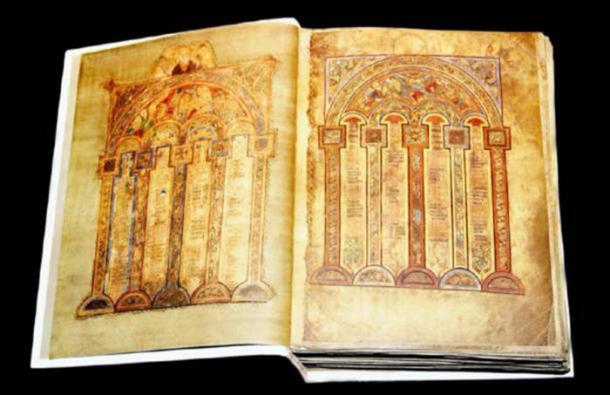Science
New Research Redefines Origins of the Book of Kells

New research has emerged that challenges the long-held belief regarding the origins of the Book of Kells, one of the world’s most famous illuminated manuscripts. According to a forthcoming study by Dr. Victoria Whitworth, the intricate Gospel book, which dates back over 1,200 years, was likely created in Pictish eastern Scotland, specifically at the monastery of Portmahomack in Easter Ross. This finding could significantly alter our understanding of medieval Scottish culture and manuscript production.
Traditionally, scholars have attributed the creation of the Book of Kells to the monastery located on the island of Iona. It was believed that the manuscript was later transferred to the monastery of Kells in County Meath, Ireland, following Viking raids in the 9th century. This new perspective not only questions the geographical narrative but also highlights the cultural contributions of Pictish communities to early medieval art and literature.
The Book of Kells, renowned for its elaborate illuminated illustrations of the four Gospels—Matthew, Mark, Luke, and John—has been celebrated as Ireland’s cultural treasure. The manuscript is housed at Trinity College Dublin and attracts thousands of visitors each year, eager to witness its stunning artistry and intricate detail.
Dr. Whitworth’s research is based on a comprehensive analysis of historical texts, archaeological findings, and stylistic comparisons with other manuscripts from the era. Her work suggests that the artistic techniques and iconography found in the Book of Kells align more closely with those of the Pictish tradition than those of the Irish monks on Iona.
The implications of this research are profound. If the Book of Kells was indeed crafted at Portmahomack, it emphasizes the importance of this site as a center of learning and artistry during a time when Pictish culture was flourishing. The monastery of Portmahomack has already garnered attention for its archaeological significance, with findings indicating it was a hub for early Christian activity.
This revelation invites further exploration into the connections between Scottish and Irish monastic traditions. It also raises questions about the transmission of artistic styles and religious practices across the British Isles during the early medieval period.
As scholars continue to investigate the origins of the Book of Kells, the narrative surrounding this iconic manuscript is poised for transformation. Dr. Whitworth’s findings serve as a reminder of the dynamic nature of historical scholarship, where new evidence can reshape our understanding of the past.
The ongoing research highlights the critical role of interdisciplinary approaches in uncovering history. By combining art history, archaeology, and textual analysis, researchers like Dr. Whitworth are illuminating the complexities of cultural exchange in early medieval Scotland and Ireland.
As this study gains attention, it is likely to inspire further inquiries into the origins of other historical artifacts, enriching our appreciation of the shared heritage of the British Isles. The Book of Kells, whether seen as an Irish treasure or a product of Pictish genius, remains a testament to the enduring legacy of medieval artistry and faith.
-

 Top Stories4 weeks ago
Top Stories4 weeks agoTributes Surge for 9-Year-Old Leon Briody After Cancer Battle
-

 Entertainment2 months ago
Entertainment2 months agoAimee Osbourne Joins Family for Emotional Tribute to Ozzy
-

 Politics2 months ago
Politics2 months agoDanny Healy-Rae Considers Complaint After Altercation with Garda
-

 Top Stories2 months ago
Top Stories2 months agoIreland Enjoys Summer Heat as Hurricane Erin Approaches Atlantic
-

 World3 months ago
World3 months agoHawaii Commemorates 80 Years Since Hiroshima Bombing with Ceremony
-

 Top Stories3 months ago
Top Stories3 months agoFianna Fáil TDs Urgently Consider Maire Geoghegan-Quinn for Presidency
-

 World3 months ago
World3 months agoGaza Aid Distribution Tragedy: 20 Killed Amid Ongoing Violence
-

 World3 months ago
World3 months agoCouple Convicted of Murdering Two-Year-Old Grandson in Wales
-

 Top Stories4 weeks ago
Top Stories4 weeks agoNewcastle West Woman Patricia Foley Found Safe After Urgent Search
-

 Top Stories2 months ago
Top Stories2 months agoHike Donegal’s Errigal Mountain NOW for Unforgettable Summer Views
-

 Top Stories2 months ago
Top Stories2 months agoClimbing Errigal: A Must-Do Summer Adventure in Donegal
-

 World3 months ago
World3 months agoAristocrat Constance Marten and Partner Convicted of Infant Murder









